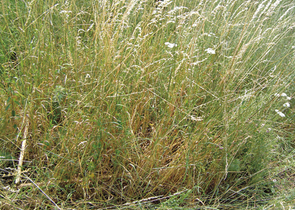Nature Conservation 5/2012 — 27. 2. 2013 — Research, Surveys and Data Management — Print article in pdf
Dostálek J. & Frantík T.: Controlling of Expansive Grass Arrhenatherum elatius and Woody Species by

In 2000, a grazing management programme was introduced to maintain the species diversity in dry grasslands in the Specially Protected Areas within the City of Prague.
The responses of the expansive perennial grass species Tall Oatgrass (Arrhenatherum elatius) and of the woody species (the most common of which was the Blackthorn Prunus spinosa) to the characteristics of the grazing period were monitored for over a decade. Grazing during spring until the end of June had the greatest impact on the reduction of the expansive Arrhenatherum elatiusand woody species. Grazing in the height of summer and in autumn did not reduce the cover of these plants. On the contrary, grazing in late summer could favour both the Tall Oatgrass and woody species.

